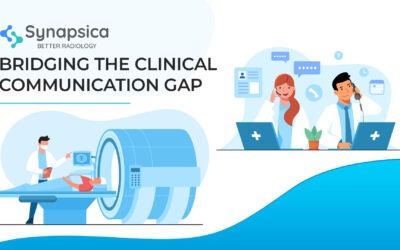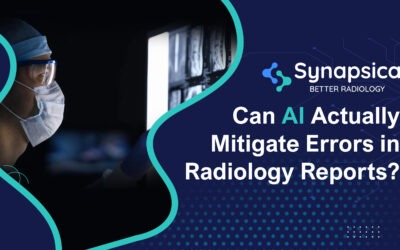
Patient care is not just a protocol and diagnosis-driven process. It involves a lot of reporting, managerial and clinical communication tasks that doctors, surgeons, and lab technicians end up spending a lot of time on for smooth patient care. The healthcare gap has been widening constantly despite the advancements in technology. While numerous reasons account for the increasing gap in healthcare, miscommunication tops the list.
According to a report published by Ponemon Institute, a pre-eminent research center committed to privacy, data protection, and information security policy, the average U.S hospital loses $1.7 mn a year due to poor communication and coordination among healthcare professionals.
Better communication is not only essential for healthcare providers but also for patients.
So, what are the obstacles that hinder effective communication between radiologists and clinicians:
1. High-pressured environment
Medical practitioners, particularly radiologists, work in a highly pressurized environment that can influence their physical and emotional health.
*Effect of a gloomy environment
Working in dark rooms for long hours takes a toll on the efficiency of radiology professionals. Also, radiologists perform a myriad of tasks apart from studying images. They perform various other back-office operations such as creating reports, consulting with referring physicians, and other administrative operations.
* Short doctor-patient visits
On the other hand, clinicians are unable to spend not more than 18 minutes with their patients (HealthDay New) due to various factors like appointment overrun, overburdening providers, and increased waiting times for patients.
While the shortage of time and increased workload has made it difficult for radiologists to create timely and concise radiology reports, the same scenario has made clinicians look forward to reports that are of more clinical relevance.
* Impact of the COVID-19 pandemic
The ongoing COVID-19 pandemic and the increasing shortage of physicians have only worsened the situation. Increasing levels of stress, in turn, affect the performance of the professionals – which means a patient’s life could be at risk.
A well-defined communication mechanism along with advanced technologies is essential for healthcare professionals to handle their increasing workload and efficiently share their findings with their co-workers and patients.
2. Old fashioned communication channels
The healthcare industry has always been eager to adopt new technologies. From 3-D printing to AI-assisted surgeries, healthcare has witnessed the potential of revolutionary technologies in real-time.
* Less use of modern-day communication technologies
Despite the advancements in the healthcare industry, many institutions haven’t yet adopted new-age communication technologies. The entire burden falls on the senior practitioners to plan and share communication materials with patients, mid-level and front-line workers, and other caregivers since there is no framework to support and streamline multi-directional communication.
* Less use of e-based communication channels
EHRs (Electronic Health Records) and other clinical systems neither capture patient information nor format medical documents in a standard manner. The easiest way to exchange records in an environment with incompatible systems is to create those records in a document format. No wonder healthcare institutions are still heavily dependent on outdated communication channels like fax hardware which is often unreliable and may lead to document delivery delays and failures, ultimately widening the gap between radiologists and clinicians and hence creating a negative impact on patient care.
3. Less focus on internal communication
Healthcare providers concentrate more on bridging the communication gap between healthcare professionals and patients than on improving internal communication. Communication between physicians is as important as communication between healthcare professionals and patients.
* Missing out information on interpreting radiologists
Also, most physicians work alone, and the specialist care unit is mostly fragmented. It is also practically impossible for healthcare professionals to be always in contact with each other. Most radiology reports don’t contain information about the interpreting radiologists, making it difficult for clinicians to directly communicate with them in case of queries/suspicions – all leading to poor delivery of healthcare.
4. Use of unstructured and lengthy reports
Most times, radiology reports are unstructured and lengthy. Only a few hospitals and diagnostic centers focus on creating quantitative reports that are concise and easily comprehensible. Though generating unstructured reports is much easier and more economical, it is of very less clinical value to physicians, particularly while planning for surgeries or post-surgery treatments.
Is there a way to improve communication between radiologists and clinicians?
Any problem has a solution.
Similarly, the communication gap between radiologists and clinicians can be effectively reduced with sustainable communication strategies and technology breakthroughs like Artificial Intelligence.
The strategies and means aren’t just limited to physicians and radiologists. It applies to all healthcare professionals, including the frontline staff. Know more in the upcoming blog – Bridging the Clinical Communication Gap 101.


